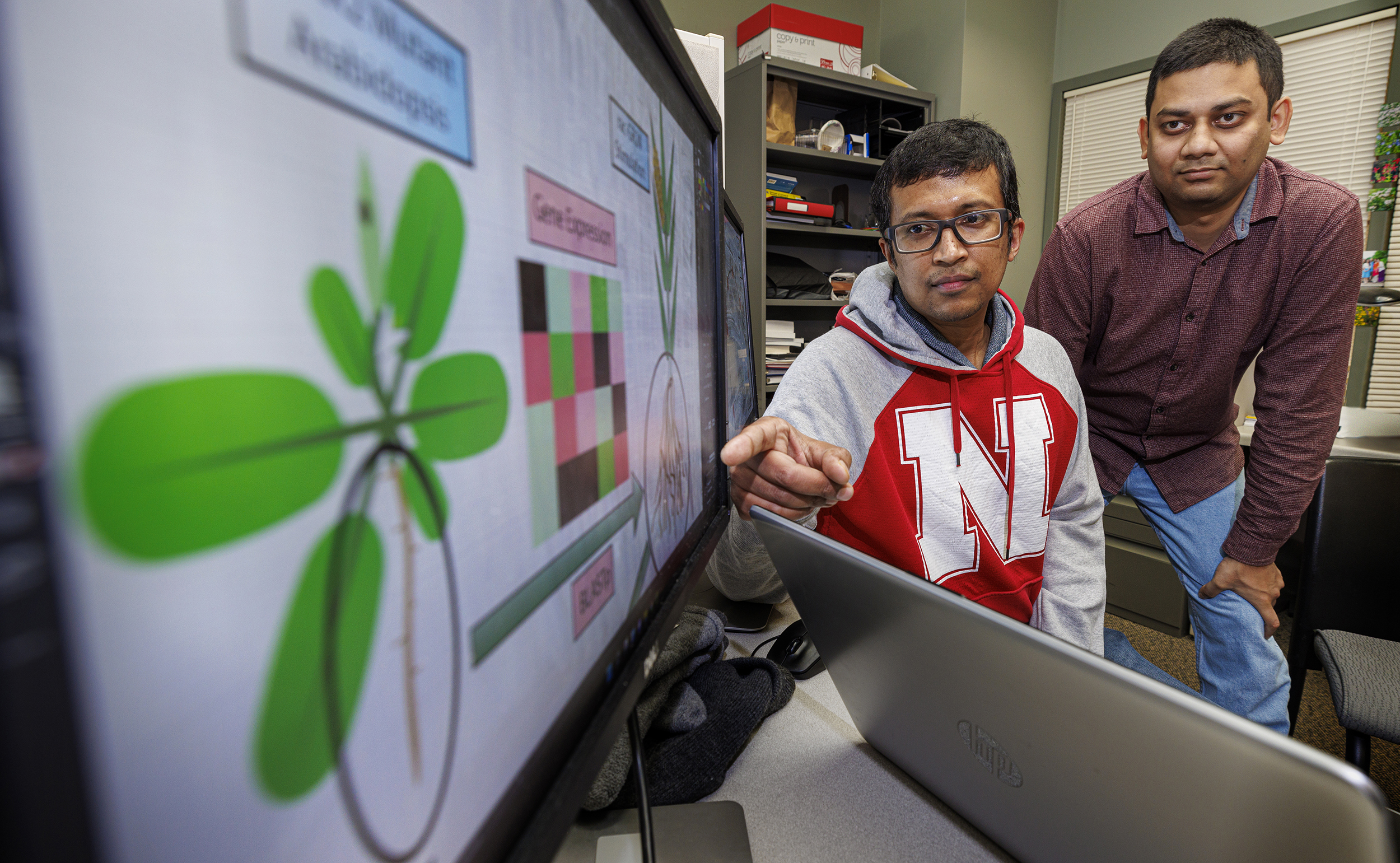
University of Nebraska–Lincoln researchers are studying how corn roots adapt to insufficient nitrogen, with an eye toward making genetic tweaks that might increase, or at least maintain, plant growth and yields without excessive application of fertilizer.
The growth and development of corn largely depends on its nutrient uptake through the roots, so studying their growth, response and associated metabolic reprogramming to stress conditions is becoming an important research focus, said Rajib Saha, assistant professor of chemical and biomolecular engineering, whose research is being conducted in collaboration with teams from Penn State and Institut National de Recherche pour l’Agriculure, l’Alimentation et l’Envionnement.
Nitrogen fertilizer has a significant impact on the climate, but limiting its use can compromise crop yields, Saha said.
“One of the critical aspects of growing any agricultural product is how much of the required micronutrients it can get from the soil,” he said. “The idea is to understand what happens when any plant needs to grow with nitrogen deficiency or stress. What kind of changes does the plant go through? If we can understand that better, can we now do some tweaking so that plants can survive or even thrive with taking lesser amounts of nitrogen?”
Saha’s team created a genome-scale metabolic model for the corn root to study its nitrogen-use efficiency under nitrogen stress conditions.
“If there’s insufficient nitrogen, we would intuitively expect that the root should go deeper to scavenge for more nitrogen,” said Niaz Bahar Chowdhury, a graduate student and lead author of a new paper about the research in the Journal of Experimental Botany, which is also highlighted in an Insight article published in the same journal.
Indeed, that’s what the model showed — longer, more robust root biomass as the plant sought the nitrogen it needed. That’s a different reaction than other parts of the plant, which tend to languish when they don’t get enough nutrients.
“When as a plant you are spending so much resource to grow roots, it comes at the expense of the rest of the plant,” Saha said. “At the end of the day, you are resource limited. The plant might survive but could sacrifice productivity.
“What’s the sweet spot? How could we make sure it could grow its root in such a way that it still does have enough energy to grow shoots and the yield is not hurt?”
The reconstruction and simulation of the entire metabolic network encoded in a species, as Saha’s team has done, are dubbed “genome-scale” because researchers try to include all the enzymes within the sequenced genome of the species. In this case, reconstruction of the network via computer model allowed the team to examine the systematic impact of the nitrogen-limiting growth regime on the root tissue.
The Nebraska researchers highlighted eight lipids and two metabolites that they believe play a role in the increased root growth that occurs under nitrogen-poor conditions.
This corn root network builds on work Saha did as a graduate student at Penn State, where he built a similar model, but of corn leaf. The next step will be building a model for the entire corn plant — root, shoot, leaf and seed — to get a broader sense of how corn plants might adapt to nitrogen deficiency.
He believes researchers might be able to adjust gene expression and metabolic levels to further gauge the plants’ reaction and improve their growth under nutrient-stressed conditions. Ultimately, the findings will complement some of the ongoing research led by NSF and Nebraska EPSCoR-funded Center for Root Rhizobiome Innovation researchers and can be tested in actual field plots.
The corn root modeling also could help scientists study the effect of other stressors such as phosphate deficiency, salinity, heat stress, drought, heavy metal stresses, rot disease and more.
The research is funded by a National Science Foundation CAREER grant; an NSF Established Program to Stimulate Competitive Research grant that supports the Center for Root and Rhizobiome Innovation, awarded to Saha; and the Center for Bioenergy Innovation, a U.S. Department of Energy Research Center supported by the Office of Biological and Environmental Research in the DOE Office of Science in which one of the collaborators, Penn State’s Costas Maranas, is involved.








